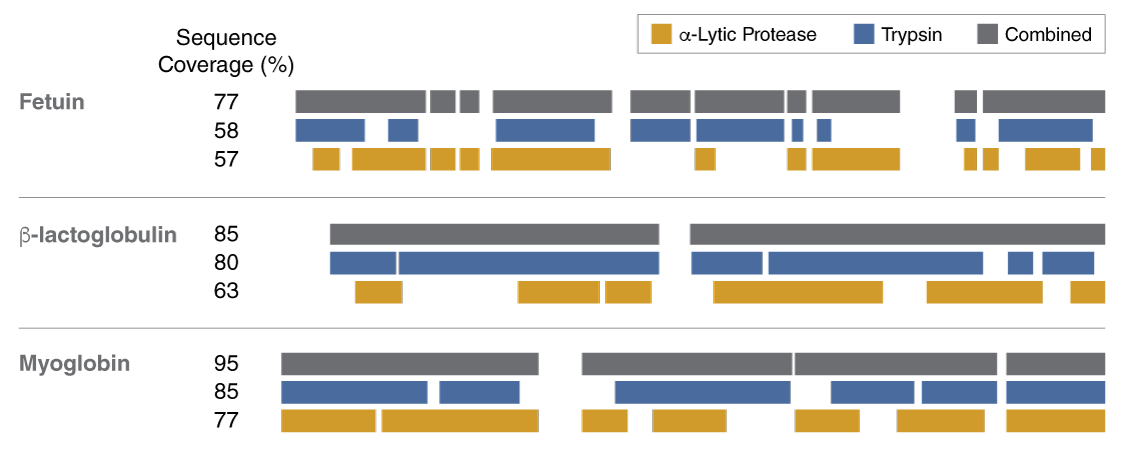上海金畔生物科技有限公司代理New England Biolabs(NEB)酶试剂全线产品,欢迎访问官网了解更多产品信息和订购。
产品信息

TEV Protease is a highly specific cysteine protease. The TEV Protease recognition sequence with the highest catalytic efficiency is ENLYFQ ▼S; however, the amino acid in the P1’ position can also be G, A, M, C, or H (1). It is often used for the removal of affinity purification tags such as maltose-binding protein (MBP) or poly-histidine from fusion proteins. TEV Protease has a 7xHis-tag for easy removal from a reaction using nickel affinity resins and has been engineered to improve thermal stability and decrease autolysis.
产品来源
Cloned from Tobacco Etch Virus and expressed in E. coli.
- 产品类别:
- NEBExpress MBP Fusion and Purification System,
- Bacterial E. coli Protein Expression Products,
- Nickel Purification (His-tag),
- Proteases Products,
- Protein Purification Products,
Protein Expression Products
- 应用:
- Fusion Protein Cleavage,
- Target Protein Insolubility ,
- Protein Purification,
- Protein Digestion,
Protein Expression
-
产品组分信息
本产品提供以下试剂或组分:
NEB # 名称 组分货号 储存温度 数量 浓度 -
P8112S -20 TEV Protease P8112SVIAL -20 1 x 0.1 ml 10,000 units/ml TEV Protease Reaction Buffer B8035SVIAL -20 1 x 1 ml 10 X
-
-
特性和用法
单位定义
1 unit of TEV Protease will cleave 2 µg of MBP-fusion protein, MBP5-TEV-paramyosin ΔSal, to 95% completion in a total reaction volume of 10 µl in 1 hour at 30°C in 50 mM Tris-HCl (pH 7.5 @ 25°C) with 0.5 mM EDTA and 1 mM DTT.
反应条件
1X TEV Protease Reaction Buffer
Incubate at 30°C1X TEV Protease Reaction Buffer
50 mM Tris-HCl
0.5 mM EDTA
1 mM DTT
(pH 7.5 @ 25°C)贮存溶液
50 mM Tris-HCl
250 mM NaCl
1 mM TCEP
1 mM EDTA
50% Glycerol
pH 7.5 @ 25°C热失活
65°C for 10 minutes
分子量
实际: 28 kDa
单位活性检测条件
Two fold dilutions of TEV Protease are incubated with 2 μg MBP5-TEV-paramyosin ΔSal and 1X TEV Protease Reaction Buffer in a 10 µl reaction. The reaction mix is incubated at 30°C for 1 hour. Separation of reaction products are visualized by SDS-PAGE.
-
优势和特性
Features
- Removal of affinity purification tags such as maltose-binding protein (MBP) or poly-histidine from fusion proteins
- Engineered to improve thermal stability and decrease autolysis
- High substrate specificity with no non-specific proteolysis
-
注意事项
- The TEV Protease recognition sequence with the highest catalytic efficiency is ENLYFQ ▼S; however, the amino acid in the P1’ position (S in the recognition sequence) can also be G, A, M, C, or H (1).
- If the fusion protein sample contains > 2 M urea, > 0.5 M Guanidine hydrochloride, > 50 mM imidazole, pH values below 6 or above 9, or cysteine protease inhibitors then it will be necessary to dialyze the fusion protein before TEV Protease cleavage.
- TEV protease can be used at high concentrations without the occurrence of non-specific proteolysis.
- Reactions may be scaled-up linearly to accommodate larger reaction volumes.
-
参考文献
- Kapust, R.B. et al. (2002). Biochem. and Biophysical Research Comm.. 294, 949-955.
操作说明、说明书 & 用法
-
操作说明
- Typical Reaction Conditions for TEV Protease (NEB #P8112)
- His-tag removal from protein using TEV Protease
工具 & 资源
-
选择指南
- Protease Selection Chart
FAQs & 问题解决指南
-
FAQs
- Can TEV Protease recognize and cleave a sequence other than Glu-Asn-Leu-Tyr-Phe-Gln-(Gly/Ser)?
- Is it necessary to dialyze the sample prior to cleavage with TEV Protease?
- Can TEV Protease be used at lower temperatures?
- Is TEV Protease compatible with protease inhibitors?
- Is TEV Protease compatible with different reaction buffers?
- Can TEV Protease be removed from the reaction after cleavage?
-
实验技巧
- The optimal pH range is 6.0 – 8.0
- Optimal activity achieved in ≤0.2M NaCl; however, the enzyme retains some activity in up to 2M NaCl
- Cleavage at lower temperatures, such as 4ºC, requires overnight incubation
Inhibition occurs in the presence of ≥ 5 mM Zn2+, ≥ 1 mM Cu2+ and ≥ 10 mM Co2+
- Compatible with 10mM MgSO4, MnCl2 and CaCl2 and up to 100mM EDTA
- Compatible with the following protease inhibitors: aprotinin, benzamidine, leupeptin, pepstatin, PMSF
- Can be used at high concentrations with no non-specific proteolysis occurring
- Some substrates may require extended incubation (up to three days at either 4°C or 30°C)
- If cleavage is not complete, add more TEV protease after 24 hours and continue incubation


